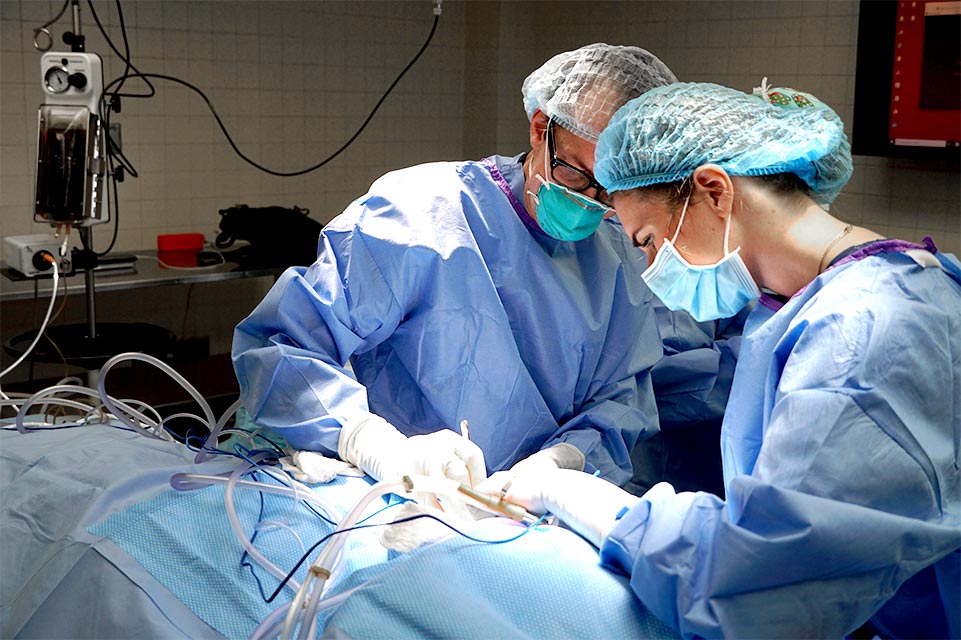You've found experienced, skilled physicians to treat your child's kyphosis?
Kyphosis is an abnormal forward curve of the upper spine. With it, children have what looks like a rounded or "hunchback" appearance. This condition is also called "dowager's hump."
Some children are born with kyphosis, but most develop it during their childhood. While some degree of front-to-back curve of the spine is normal and healthy, if a child’s spine curves forward 50 degrees or more, they should be seen by a spine specialist.
Shriners Children's physicians have treated thousands of children with kyphosis, including those with the most challenging cases. While most cases are mild, a child with kyphosis should be closely monitored by your Shriners Children's physician until they have stopped growing. Many will not require treatment. However, if the forward curve becomes severe, it could lead to pain and deformity that can compress the lungs and make breathing difficult.
If your child has severe kyphosis, they will likely need be treated with bracing and also may require surgery and halo traction. Our spine specialists perform hundreds of spine surgeries each year with the utmost care and precision.
A diagnosis of kyphosis can be stressful for the entire family. Those stressors can include fears about your child's future and insecurity about making the right decisions. Be reassured that if your child is diagnosed with kyphosis, you'll have a Shriners Children's care team to guide you. Your child’s surgeons, nurses, physical and occupational therapists, and other care providers understand the concerns of children and parents navigating this journey.
We’ve seen children with kyphosis successfully progress through childhood, as they become active preschoolers, elementary school gymnasts, and teens confidently socializing with friends and succeeding in life. Here you can learn more about pediatric kyphosis and the treatment options that are available.
Specific treatments and services may vary by location. Please contact a specific location for more information.
What Causes It?
Kyphosis can be caused by different things. In many cases, the exact cause is not known.
One type, Scheuermann’s kyphosis, tends to run in families. Other types of kyphosis can be caused by neuromuscular conditions such as cerebral palsy or spina bifida. Spinal infections and tumors can weaken the vertebrae, causing the spine to collapse forward. Treatments for spinal tumors, including chemotherapy, radiation, and surgery, can also lead to kyphosis.
Factors that increase a child’s risk of developing kyphosis include:
- Poor posture/slouching.
- A family history of spine problems.
- Neuromuscular conditions, like spina bifida, cerebral palsy, osteogenesis imperfecta and muscular dystrophy.
- Metabolic conditions, such as diabetes.
- Trauma resulting in a spinal fracture that goes untreated or heals poorly.
- Spinal infections such as osteomyelitis.
- Spinal tumors, either cancerous or non-cancerous.
Symptoms of Kyphosis
Not all symptoms of kyphosis are visible, so it might talk some good listening to your child's symptoms to become aware of a problem.
Some visible signs:
- A forward bend or hump, typically in the upper back
- Your child's upper back appears higher than normal when they bend forward
- Their head seems bent forward
- Their shoulders seem excessively rounded
- There is a noticeable difference in the height or position of your child's shoulders or shoulder blades
If your child has severe kyphosis, symptoms they might express to you include:
- Tight muscles in the backs of their thighs (hamstrings)
- Back pain and stiffness
- Trouble breathing
- Extreme fatigue
Different Types of Kyphosis
Congenital kyphosis: Your child could be born with the condition, though it may not be immediately noticeable. The condition starts when your child’s spinal column does not develop properly in the womb. Congenital kyphosis usually gets worse as your child grows. Many children with congenital kyphosis need spine surgery at some point during childhood.
Postural kyphosis: This is the most common, and usually least serious, type of kyphosis. It becomes noticeable in adolescence. Poor posture, including slouching in front of a computer or over a phone for long periods, can increase the risk that your child’s spine and surrounding muscles will not develop properly. Postural kyphosis is not a structural deformity, not painful and most often does not get worse over time. Physical therapy and, in some cases, bracing can help.
Scheuermann’s kyphosis: Also known as juvenile kyphosis; this type occurs when several vertebrae in the upper part of the spine develop a triangular shape rather than rectangular. The wedge-like shape causes the spine to bend forward at a sharp angle. A child with Scheuermann’s kyphosis cannot correct their curve by trying to stand up straight. This can be the most severe kind of kyphosis
Is It Preventable?
Certain types of kyphosis are not preventable, but there are things you could do before your child is born to help. If you are pregnant or could become pregnant, proper nutrition, prenatal care and vitamins – especially folic acid – may help reduce the risk of your child being born with a birth defect. If your family has a history of kyphosis, a geneticist may be able to help.
Some types of kyphosis are preventable. You can help your child by encouraging them to:
- Avoid slouching.
- Sit upright, ensuring that the small of the back is supported.
- Avoid carrying heavy schoolbags that can pull on the back muscles and ligaments; the best schoolbags are well-designed backpacks.
Treatment at Shriners Children's
Treatment will depend on your child’s symptoms, age and general health.
The goal of treatment at Shriners Children's is to stop the curve from getting worse and prevent deformity so your child can live a happy, independent life.
Treatment options may include:
- Observation and repeated exams: Your child may need to see our skilled physicians regularly to monitor whether the curve is getting worse. Curving of the spine often slows down or stops after a child reaches puberty. Pain is commonly treated with over-the-counter medicines.
- Exercises: If your child’s kyphosis is because of slouching, certain exercises can fix their posture. You will work with our certified physical therapists to develop a care plan that you can help your child do at home.
- Bracing: If your child is still growing, they may need a brace for some time. Our experienced pediatric orthotists will work closely with your child to customize a properly fitting brace.
- Surgery: Sometimes, bracing does not slow down the progression of the curve. In rare cases, it may be advanced so far that your child needs surgery. At Shriners Children's, our skilled spinal surgeons work as part of an experienced medical team, all dedicated to quality and safety.
- Halo traction: In severe cases, your Shriners Children's spinal surgeon will use halo traction to help gently stretch your child's spine to make it safer for spinal fusion surgery.
Without the help of Shriners Children’s, I literally wouldn't be alive. Now I walk a lot taller and straighter. I can breathe clearly, and I have confidence in myself that I thought I'd never have.
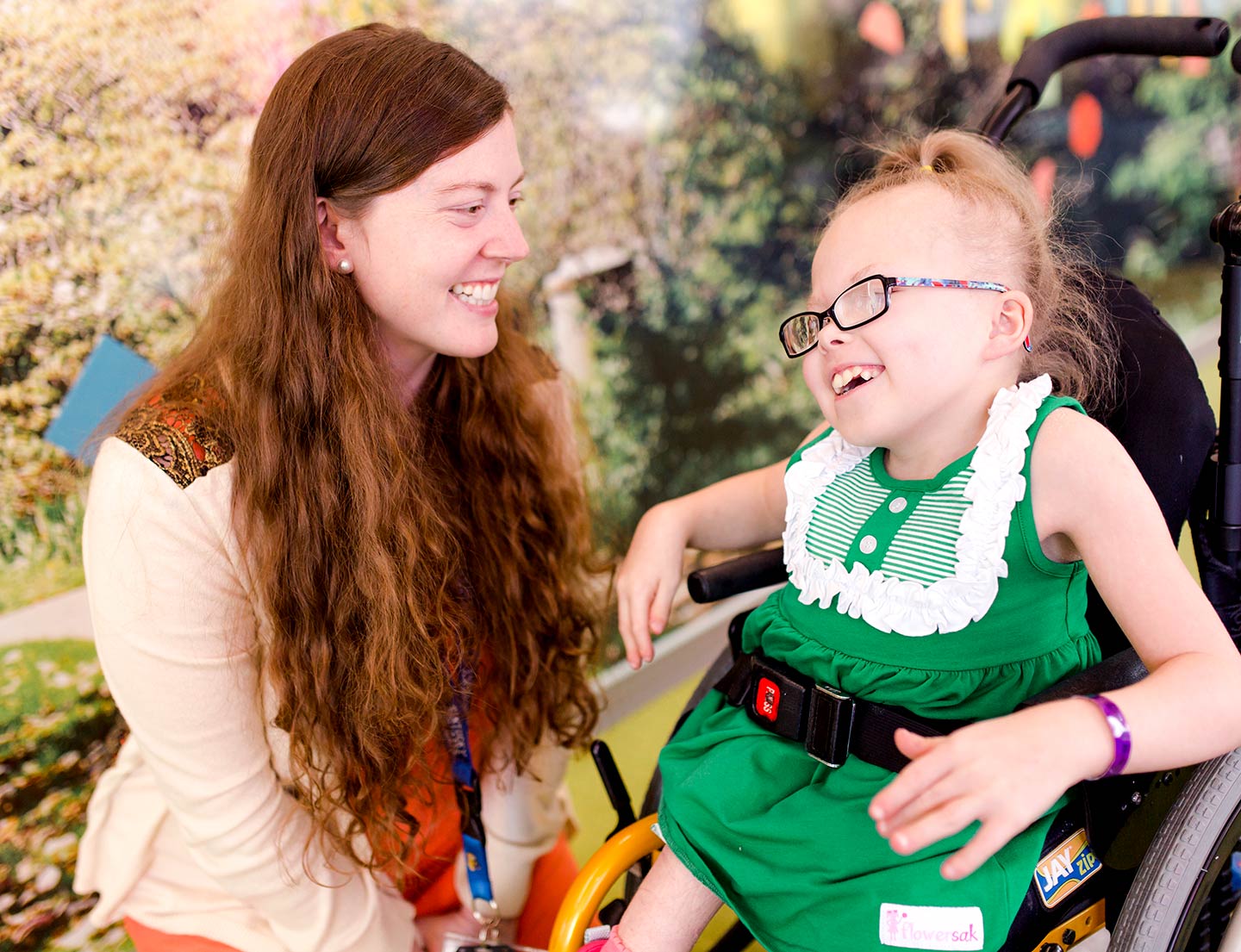
The MAGEC System for Guided Bone Growth
Innovative Treatments
View All Related Treatments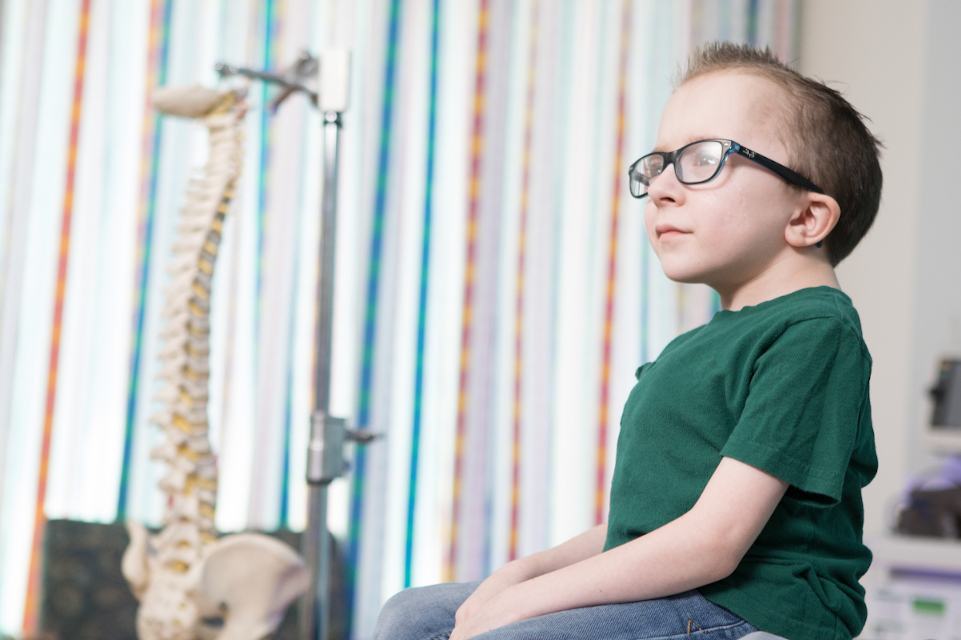
Halo Traction
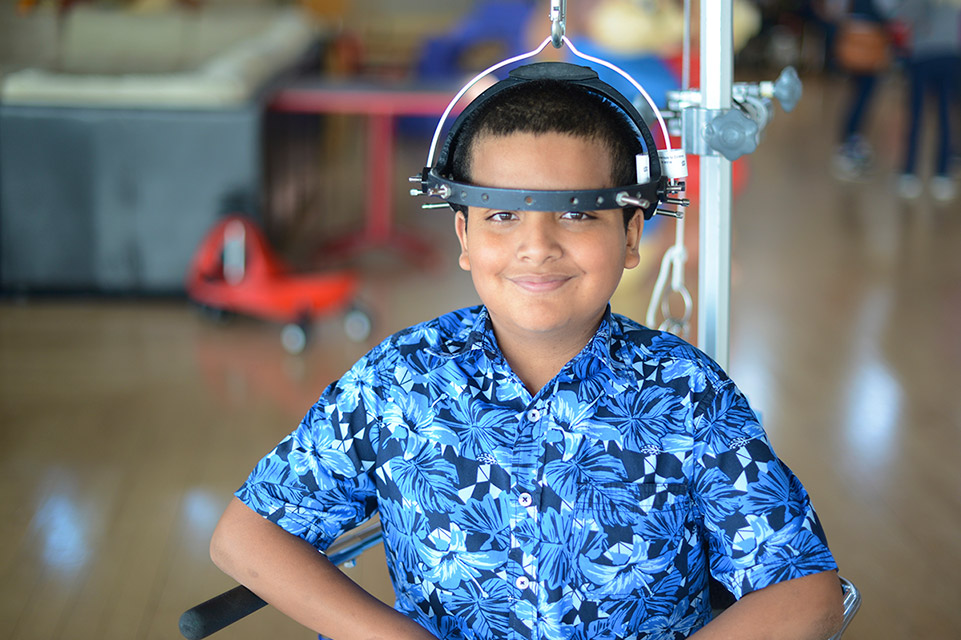
Bracing

Growing Rods
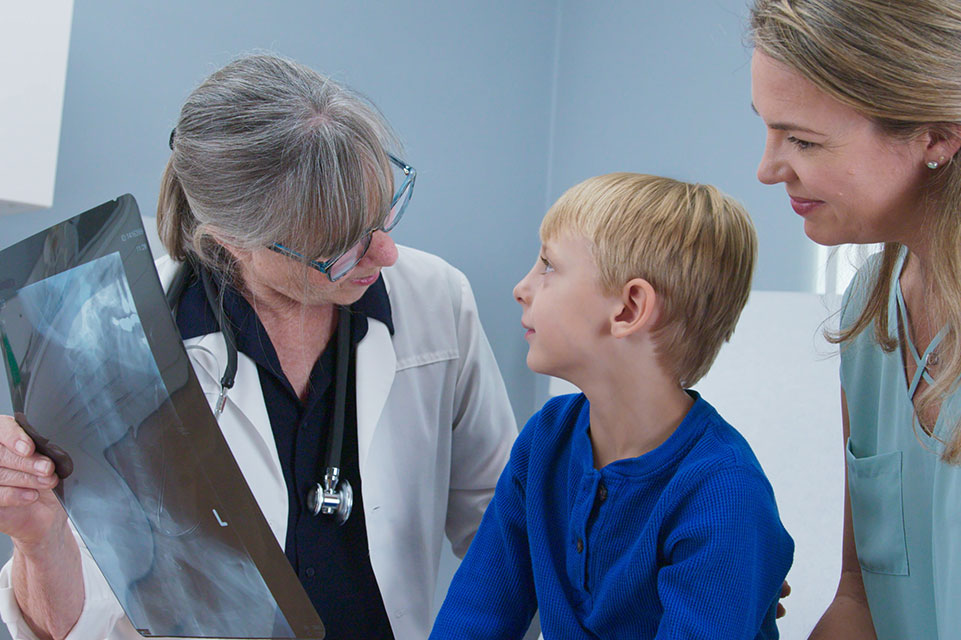
Spinal Fusion Surgery
